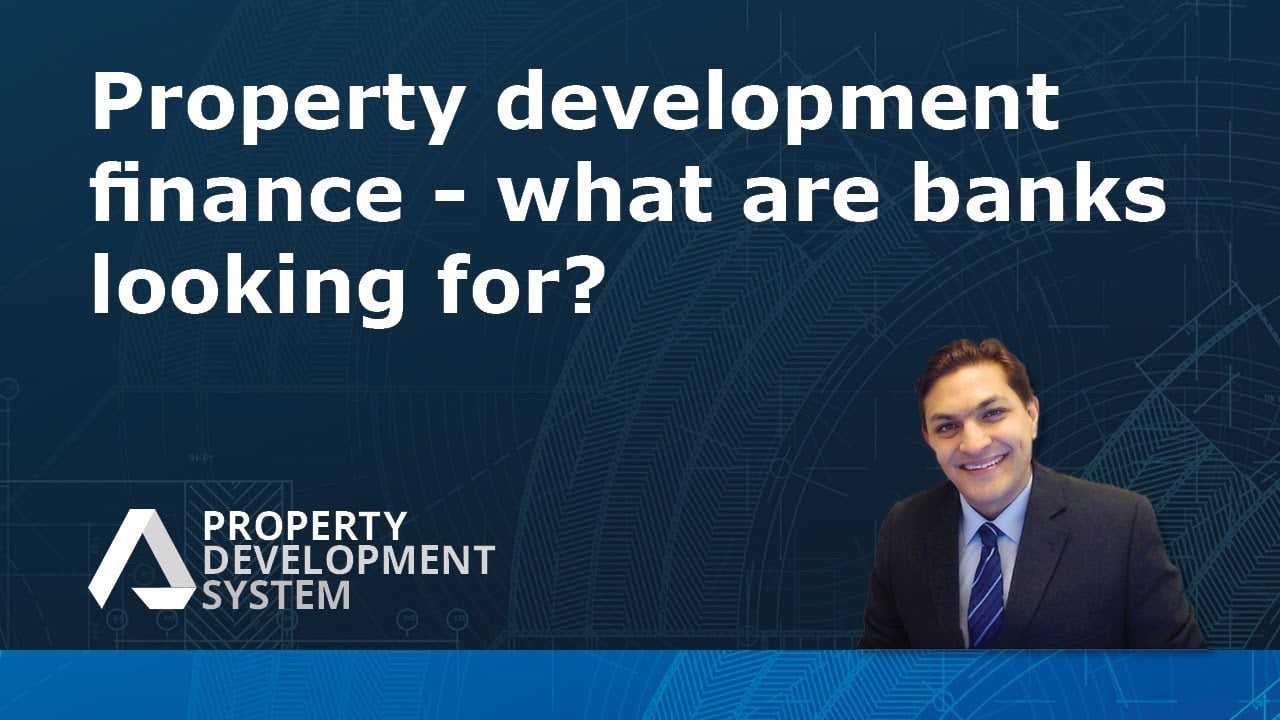What are banks looking for?
Here are the essentials of development finance, emphasising what banks assess when considering finance for development projects. Delve into various aspects crucial for securing bank loans for property development.
Development Finance
The cornerstone of any development project underscoring the inability to proceed without adequate financing. It’s highlighted that understanding how development finance operates is pivotal.
Project Report Preparation
A critical step before approaching banks. The report should encompass a project charter, scope of works, risk management plan, demand and supply analysis, market research, and financial feasibility. This documentation forms the foundation of a bank’s assessment.
Key Components in a Project Report
Financial Feasibility
Essential for banks, requiring detailed assumptions and outcomes.
Market Comparables and Permits
Inclusion of relevant market data and legal permits adds credibility.
Developer Profile
Banks consider the developer’s experience level and past projects. New developers can leverage a builder’s established profile to enhance their project’s credibility.
Lender Evaluation Criteria
It focuses on credit history, project viability, pre-sales, loan-to-value ratio, and the developer’s financial strength. A notable point is the importance of a fixed-price turnkey construction contract and the developer’s life insurance.
Risk Mitigation
Lenders use various strategies to mitigate risks, including scrutinising the number of pre-sales and possibly lowering the loan-to-value ratio based on the project’s specifics.
Interest Rates and Fees
Determined by the lender’s cost of raising funds and the risk associated with the project. Shorter loan periods attract higher interest rates.
Loan Terms and Conditions
Banks may require extra collateral personal guarantees and consider the financial strength of all parties involved in the project.
Insights based on numbers
- Development margins should be at least 15% for smaller projects and 20% for larger ones, indicating the profitability threshold banks look for.
- The establishment fee for loans can range between 1% to 3% of the total loan amount, a significant cost factor for developers to consider.
Frequently Asked Questions
How does the development margin requirement affect the overall financial planning of a development project?
The development margin requirement plays a critical role in the financial planning of a development project. Banks use a benchmark to assess a project’s financial viability and profitability before providing finance. Here’s how it impacts financial planning:
Profitability Threshold
Banks typically require a development margin of at least 15% for smaller projects and 20% for larger ones. This margin acts as a safety net, ensuring that the project has sufficient profitability to cover unexpected costs and risks. For developers, meeting or exceeding this threshold is crucial for securing financing.
Financial Feasibility Analysis
Developers must conduct thorough financial feasibility analyses to ensure their projects meet these margin requirements. This involves detailed calculations of costs, projected revenues, and potential profitability. The development margin requirement forces developers to rigorously evaluate their projects’ financial prospects and make adjustments as necessary to meet bank standards.
Risk Mitigation
The development margin buffers against financial risks, including cost overruns, market fluctuations, and project delays. A higher margin indicates a more robust project financial structure, making it more attractive to lenders. Developers must plan their projects with these margins to mitigate risks and assure banks of the project’s financial health.
Strategic Planning
To achieve the required development margin, developers might need to adjust project scopes, explore cost-saving measures, or seek more favourable financing terms. This requirement influences strategic decisions, from selecting contractors and materials to the marketing and sales strategies for the developed properties.
In what ways can new developers leverage a builder’s profile to enhance their project’s credibility with banks?
Strength in Association
For new developers needing an extensive portfolio or a proven track record, associating their project with a reputable builder can significantly boost the project’s credibility. Banks often assess the risk associated with a project by looking at the track record and reliability of the parties involved. A well-regarded builder with a history of successful projects can serve as a strong endorsement.
Mitigation of Perceived Risk
Banks perceive projects led by inexperienced developers as higher risk. Developers can mitigate this perceived risk by involving a builder with a solid reputation and experience in similar projects. It assures the bank that the project execution is in capable hands, reducing concerns over potential delays, budget overruns, and quality issues.
Enhanced Project Report
Including details of the builder’s profile in the project report—such as past projects, financial stability, and industry reputation—adds substantial weight. It signals to the bank that the development is supported by experienced professionals, which can facilitate smoother loan approval processes.
Strategic Partnerships
A strong partnership with a reputable builder can also offer indirect benefits, such as access to the builder’s network of suppliers, subcontractors, and potential buyers. These relationships can contribute to the project’s success and further reassure the bank of its viability.
Building Trust
The collaboration between a new developer and an established builder can build trust with financial institutions. It demonstrates the developer’s commitment to quality and reliability, key factors that banks consider when evaluating loan applications.
How do banks calculate interest rates for development loans, and what factors influence these rates?
Risk Assessment
Banks perform a thorough risk assessment of both the development project and the borrower. This includes evaluating the project’s viability, the developer’s credit history, and the financial feasibility of the project. Higher perceived risks lead to higher interest rates as the bank seeks to compensate for the increased likelihood of loan default.
Project Duration and Sales Velocity
The anticipated duration of the loan and the speed at which the developed properties are expected to sell significantly affect the interest rate. Shorter loan periods often attract higher rates due to the increased operational costs and risks associated with rapid turnover. Banks also consider the developer’s ability to achieve pre-sales targets, which can impact the project’s cash flow and financial stability.
Developer’s Experience and Financial Strength
A developer’s track record, experience, and financial health are crucial factors. Experienced developers with successful projects and strong financial backing are likely to secure more favorable interest rates. This is because their experience and financial resources reduce the project’s risk profile from the bank’s perspective.
Loan-to-Value Ratio (LVR)
The ratio of the loan amount to the appraised value of the project influences the interest rate. A lower LVR indicates that the developer has more equity in the project, reducing the bank’s risk and potentially leading to lower interest rates.
Market Conditions and Bank’s Funding Costs
The general economic environment and the bank’s own costs of securing funds for lending activities play a significant role in determining interest rates. In times of economic uncertainty or when the bank’s costs are higher, interest rates on development loans may increase.
Special Conditions and Fees
Banks may also adjust interest rates based on specific conditions related to the project, such as the need for additional collateral or personal guarantees. Furthermore, establishment fees and charges, which can range from 1% to 3% of the total loan amount, are considered in the overall cost of the loan but can also be reflected in the interest rate offered.
What is development finance in property development?
Development finance is critical funding required to proceed with any property development project. It’s the financial backbone that supports the project from inception to completion, emphasising the importance of securing adequate financing to ensure the project’s success.
Why is understanding how development finance operates important?
Understanding the operations of development finance is pivotal because it enables developers to structure their projects and financing applications in a way that meets the criteria of financial institutions. This knowledge helps in successfully securing the necessary funds for the project.
What is the purpose of preparing a project report before approaching banks?
The preparation of a detailed project report is a critical step before seeking financing. This report, including a project charter, scope of works, risk management plan, demand and supply analysis, market research, and financial feasibility, serves as the foundation for banks to assess the viability and profitability of the development project.
What are the key components banks look for in a project report?
Banks look for several key components in a project report:
- Financial Feasibility: Detailed assumptions and outcomes are crucial for banks to understand the project’s financial viability.
- Market Comparables and Permits: Including relevant market data and legal permits enhances the credibility of the project.
- Developer Profile: The experience level and past projects of the developer are assessed to gauge project reliability.
How do banks evaluate potential development projects?
Banks evaluate potential development projects based on several criteria, including the credit history of the developer, the viability of the project, pre-sales, loan-to-value ratio, and the developer’s financial strength. The existence of a fixed-price turnkey construction contract and the developer’s life insurance are also important factors.
What strategies do lenders use to mitigate risks?
Lenders mitigate risks through various strategies, such as scrutinizing the number of pre-sales and adjusting the loan-to-value ratio based on the specifics of the project. These measures help protect the lender’s investment.
How are interest rates and fees determined for development loans?
Interest rates and fees for development loans are determined by the lender’s cost of raising funds and the risk associated with the project. Generally, shorter loan periods attract higher interest rates due to the increased risk and expedited repayment schedule.
What are typical loan terms and conditions for property development projects?
Loan terms and conditions can include requirements for extra collateral, personal guarantees, and an assessment of the financial strength of all parties involved in the project. These terms are set to ensure the bank’s interests are safeguarded.
What profitability thresholds do banks look for in development projects?
Banks typically look for development margins of at least 15% for smaller projects and 20% for larger ones. These thresholds indicate the minimum profitability banks expect to see to consider the project financially viable.
How significant are the establishment fees for development loans?
The establishment fee for loans can range between 1% to 3% of the total loan amount. This represents a significant cost factor for developers and should be considered carefully in the project’s budgeting and financial planning.
Test Your Knowledge
Multiple-Choice Questions on Development Finance and Bank Requirements
1. What is the primary purpose of development finance in property development?
A) To cover marketing expenses
B) To provide funding from project inception to completion
C) To pay for legal fees only
D) To fund the developer’s personal expenses
2. Why is a detailed project report critical before approaching banks for financing?
A) It is a formality that banks require
B) It provides a summary of the project for marketing purposes
C) It forms the foundation of a bank’s assessment of the project’s viability and profitability
D) It helps in deciding the project’s location
3. Which of the following is NOT a key component banks look for in a project report?
A) Color scheme of the development
B) Financial feasibility
C) Market comparables and permits
D) Developer profile
4. What do banks evaluate when considering finance for development projects?
A) The color preferences of the developer
B) Credit history, project viability, pre-sales, loan-to-value ratio, and developer’s financial strength
C) The number of pages in the project report
D) The social media presence of the developer
5. How do banks typically mitigate risks associated with development loans?
A) By offering loans to all applicants without evaluation
B) By scrutinizing the number of pre-sales and adjusting the loan-to-value ratio
C) Ignoring the developer’s credit history
D) Focusing solely on the developer’s experience without considering financial feasibility
6. Which factor does NOT directly influence the interest rates on development loans?
A) The developer’s favorite sports team
B) The lender’s cost of raising funds
C) The risk associated with the project
D) Shorter loan periods
7. What are the minimum profitability thresholds banks look for in development projects?
A) 5% for smaller projects and 10% for larger ones
B) 15% for smaller projects and 20% for larger ones
C) 25% for all projects
D) 50% for luxury projects only
8. How significant are the establishment fees for development loans in terms of cost consideration?
A) Insignificant, less than 0.5% of the total loan amount
B) Between 1% to 3% of the total loan amount, representing a significant cost factor
C) Fixed at 5% of the total loan amount for all projects
D) Variable and negotiable with no set range
Answers
- B) To provide funding from project inception to completion
- C) It forms the foundation of a bank’s assessment of the project’s viability and profitability
- A) Color scheme of the development
- B) Credit history, project viability, pre-sales, loan-to-value ratio, and developer’s financial strength
- B) By scrutinizing the number of pre-sales and adjusting the loan-to-value ratio
- A) The developer’s favorite sports team
- B) 15% for smaller projects and 20% for larger ones
- B) Between 1% to 3% of the total loan amount, representing a significant cost factor
Assignment
Practical Assignment on Development Finance and Bank Requirements
Objective:
This assignment is designed to deepen your understanding of the essential components and considerations of development finance, focusing on what banks assess when considering finance for development projects. You will engage in creating a mock project report, conduct research on market comparables, and analyze the financial aspects critical for securing bank loans for property development.
Part 1: Project Report Preparation
Task 1: Create a Project Charter
To Do: Outline a brief project charter for a hypothetical property development project. Include project objectives, stakeholders, and the expected outcome.
Task 2: Scope of Works
To Do: Draft a scope of works document detailing the construction phases, timelines, and key deliverables for your project.
Task 3: Risk Management Plan
To Do: Develop a risk management plan identifying potential risks associated with your project and strategies to mitigate them.
Task 4: Demand and Supply Analysis
To Do: Conduct a basic demand and supply analysis for the property market in your chosen project location. Highlight factors influencing demand and supply.
Task 5: Market Research
To Do: Perform market research to gather data on comparable property developments in the area. Focus on pricing, amenities offered, and target demographics.
Task 6: Financial Feasibility Study
To Do: Prepare a simplified financial feasibility study for your project. Include cost estimates, projected revenues, and a profitability analysis.
Part 2: Deep Dive into Key Components
Research Question 1
How can new developers leverage a builder’s profile to enhance their project’s credibility with banks?
To Do: Identify a reputable builder or construction company and discuss how partnering with them could improve a project’s credibility. Include aspects such as past projects, industry reputation, and financial stability.
Research Question 2
Investigate how banks calculate interest rates for development loans and what factors influence these rates.
To Do: Choose a bank that offers development finance and summarize their criteria for determining interest rates on development loans. Discuss how the loan-to-value ratio, project duration, developer experience, and market conditions could affect these rates.
Part 3: Analysis and Strategic Planning
Task 7: Analyze Development Margin Requirements
To Do: Explain how a development margin of at least 15% for smaller projects and 20% for larger ones impacts the financial planning of a development project. Discuss strategies a developer could use to meet or exceed these thresholds.
Task 8: Loan Terms and Conditions Review
To Do: Discuss the implications of loan terms and conditions such as extra collateral and personal guarantees on a development project. How do these terms affect the project’s financial structure and the developer’s responsibilities?
Task 9: Establishment Fees Impact Analysis
To Do: Calculate the range of establishment fees for a hypothetical loan amount of $2,000,000. Discuss how these fees impact the overall cost of the loan and what developers should consider regarding these fees in their project budgeting.
Submission Guidelines
- Compile your findings, analyses, and documents into a cohesive report.
- Ensure your report is clear, well-organized, and supported by data where applicable.
- Submit your report via mail or comments.



